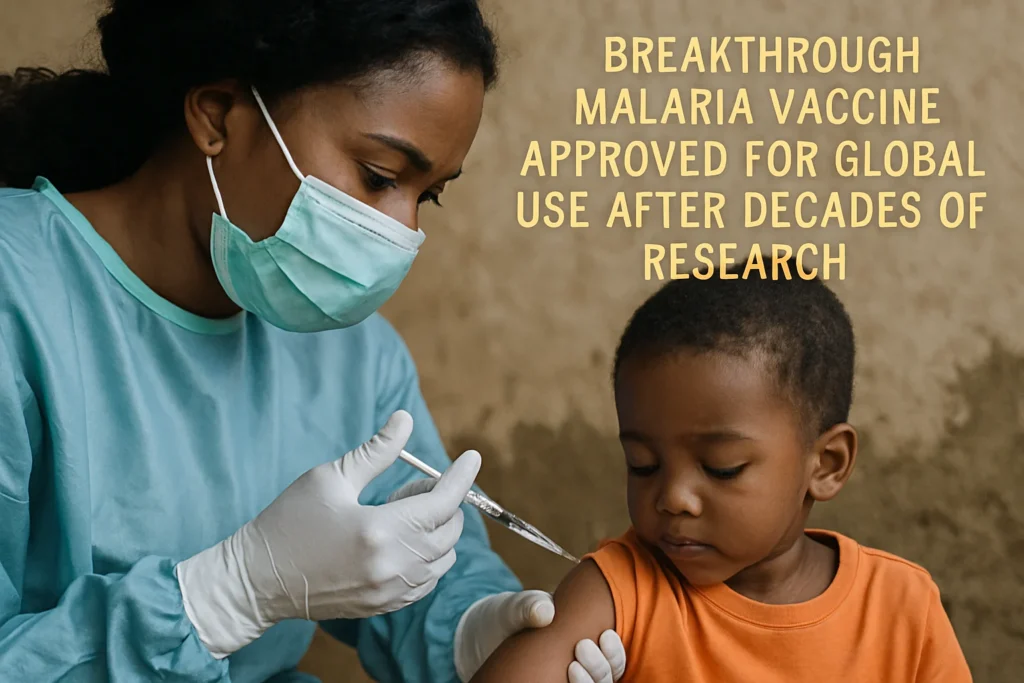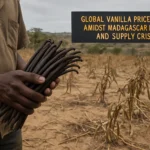A Millennia-Long Struggle Against a Silent Scourge
Malaria is not just a disease; it is a force that has profoundly shaped the course of human history for millennia. Its presence is etched in the earliest annals of civilization, with ancient Chinese medical texts from 2700 BCE meticulously describing the recurring fevers that characterize the illness. The great Greek physician Hippocrates documented its seasonal patterns in the 5th century BCE, linking its prevalence to environmental factors. The disease’s devastating impact is even believed to have contributed to the fall of the Roman Empire, as its relentless outbreaks weakened populations and hampered military campaigns. For centuries, this silent, invisible killer determined the boundaries of empires and dictated where human settlements could thrive, leaving a trail of suffering and death that spanned the globe.
The parasite responsible, Plasmodium, has an equally ancient and complex history, having co-evolved with primates for at least 20 million years. When humans first emerged in Africa, the parasite found its perfect host, and as our ancestors migrated across continents, malaria spread with them. By the Middle Ages, it had become a persistent threat in Europe, where it was known as “marsh fever” due to its association with stagnant, swampy waters. The sheer resilience and adaptability of the parasite have made the quest for a solution one of the most enduring and challenging scientific endeavors in human history.
The Long and Arduous Quest for a Cure and a Vaccine
The modern scientific battle against malaria began in the late 19th century. In 1880, a French physician named Charles Louis Alphonse Laveran made a pivotal observation, seeing the malaria parasite for the first time in the blood of a patient. This groundbreaking discovery dismantled the long-held “miasma theory,” which incorrectly attributed the disease to “bad air” from swamps. This was followed by another monumental breakthrough in 1897 when British doctor Ronald Ross proved that mosquitoes were the vectors for the disease, a discovery that earned him the 1902 Nobel Prize in Medicine.
These discoveries initiated a century of research, but progress was painfully slow. While effective treatments were eventually developed, they primarily focused on treating existing infections rather than preventing them. These included:
- Quinine: Extracted from the bark of the South American cinchona tree, it was the first effective treatment.
- Chloroquine: A synthetic drug developed during World War II that became a staple in malaria treatment.
- Artemisinin: A potent compound discovered in China in the 1970s, extracted from the sweet wormwood plant.
While these drugs saved countless lives, the dream of a preventative vaccine remained an elusive “Holy Grail,” a scientific challenge that seemed almost insurmountable.
The Unprecedented Challenges of Malaria Vaccine Development
Creating a malaria vaccine proved to be exponentially more difficult than developing vaccines for viral diseases like polio or measles. The unique biological complexities of the Plasmodium parasite presented a host of formidable scientific hurdles:
- A Complex and Elusive Life Cycle: The parasite undergoes multiple transformations, moving between mosquitoes and humans. In humans, it first resides in the liver before invading red blood cells. Each of these stages presents a different set of proteins, making it a moving target for the immune system. A vaccine had to be effective against multiple stages to be successful.
- Masters of Immune Evasion: The parasite has evolved cunning ways to evade the immune system. It can hide inside liver cells and red blood cells, effectively cloaking itself from the body’s natural defenses. This makes it difficult for the immune system to mount a sustained and effective attack.
- Constant Antigenic Variation: Plasmodium parasites have the remarkable ability to constantly change their surface proteins, a process known as antigenic variation. This means that even if the immune system recognizes one version of the parasite, it may not recognize the next, rendering an initial immune response ineffective.
- Partial Natural Immunity: Unlike many other infectious diseases, contracting malaria does not confer complete, lifelong immunity. Individuals living in endemic areas are often reinfected multiple times, a clear indication that the body’s natural response is not strong enough to completely eradicate the parasite.
These factors made the development of a malaria vaccine one of the most daunting and expensive quests in medical history.
The First Breakthrough: The Dawn of RTS,S (Mosquirix)
After decades of setbacks, the first glimmer of hope arrived in the 1980s. The journey began with an unlikely collaboration between the Walter Reed Army Institute of Research, a leader in military medicine, and SmithKline Beecham, a pharmaceutical company that would later become part of GlaxoSmithKline (GSK). This partnership laid the groundwork for the first-generation malaria vaccine, RTS,S, known commercially as Mosquirix.
The development of RTS,S was a marathon, not a sprint:
- 1987: The initial vaccine concept was born, based on targeting a single protein from the parasite.
- 1990s: Early clinical trials demonstrated a promising, albeit limited, immune response.
- 2000s: The vaccine progressed to large-scale, multinational trials in Africa, a crucial step for real-world testing.
- 2015: The World Health Organization (WHO) recommended its pilot implementation, recognizing it as a historic first step.
- 2019: The vaccine was rolled out in pilot programs across Ghana, Kenya, and Malawi, finally reaching the communities that needed it most.
While RTS,S was a monumental achievement, its limitations were clear. Its efficacy was moderate, offering only 30-40% protection against clinical malaria. The protection it offered was short-lived, waning significantly after 18-24 months, and it required a complex four-dose schedule, making widespread implementation challenging. These limitations, however, did not signal a failure; they provided the crucial foundation and data needed to develop the next generation of vaccines.
The Mosquirix-2 Revolution: A Quantum Leap in Vaccine Technology
Building directly on the knowledge and experience gained from RTS,S, Mosquirix-2 represents a quantum leap in malaria vaccine technology. This second-generation vaccine incorporates key innovations that have dramatically improved its efficacy and durability.
1. A More Potent Adjuvant System
The original RTS,S vaccine utilized the AS01 adjuvant to boost the immune response. Mosquirix-2, however, incorporates a novel and more potent adjuvant system known as Matrix-M. This adjuvant, derived from saponins found in the bark of Chilean soapbark trees, is a powerhouse for immune activation. It works by creating a more robust and sustained immune response, leading to:
- A much stronger and more durable antibody response.
- The generation of more long-lasting immune memory cells.
- Broader protection against a wider range of parasite strains.
2. Higher Antigen Concentration for a Stronger Response
Mosquirix-2 also features a higher concentration of the key antigen, the circumsporozoite protein (CSP). This increased dose allows the vaccine to generate:
- Up to three times more antibodies than RTS,S.
- A significantly better T-cell response, which is crucial for killing infected cells.
- The combined effect of a potent adjuvant and a higher antigen load results in a much more effective and longer-lasting protective shield.
3. Streamlined Manufacturing and Improved Stability
The developers also focused on making the vaccine more practical for real-world use. Novel production methods allow for:
- Faster and more scalable manufacturing, critical for meeting global demand.
- Lower production costs, estimated at $2-4 per dose compared to $5 for RTS,S, making it more affordable for low-income countries.
- Improved temperature stability, which is vital for maintaining vaccine integrity in remote areas with limited access to refrigeration.
Clinical Trial Triumphs and Real-World Impact
Mosquirix-2’s journey to approval was supported by unprecedented African-led research. A massive Phase III clinical trial was conducted between 2021 and 2023 at 15 centers across Burkina Faso, Kenya, Mali, and Tanzania. The results were nothing short of spectacular:
- Participants: Over 24,000 children aged 5-36 months were enrolled, representing the most vulnerable population.
- Efficacy: The vaccine demonstrated an incredible 82% efficacy against the first clinical malaria cases, 77% against severe malaria, and a remarkable 65% reduction in malaria-related hospitalizations.
- Duration: The protection remained strong for at least 24 months, a vast improvement over the first-generation vaccine.
Furthermore, pilot studies in high-transmission areas provided compelling evidence of the vaccine’s real-world effectiveness, showing a 45% reduction in all-cause child mortality and a 60% reduction in malaria-related hospitalizations. These studies also observed “herd protection” effects, where the vaccination of a significant portion of a community helped to protect even unvaccinated individuals.
The Global Rollout: From Lab to Lifeline
Producing enough vaccine to meet the global demand for Mosquirix-2 is a monumental challenge. The solution came through a crucial partnership with the Serum Institute of India, the world’s largest vaccine manufacturer. This collaboration provides the capacity to produce 200 million doses annually, with plans for African fill-and-finish plants to be established to enhance local production.
The WHO’s rollout plan prioritizes equity and impact, focusing on the countries with the highest disease burden:
- Phase 1 (2024-2026): Targeting 15 of the highest-burden countries, with a goal of achieving 60% coverage in endemic regions by integrating the vaccine into routine immunization schedules.
- Phase 2 (2027-2030): Expanding the program to 30 countries and exploring new delivery mechanisms, such as school-based vaccination programs.
The logistical challenges are immense, but innovations in vaccine formulation have made the task more manageable, with Mosquirix-2 demonstrating greater temperature stability, capable of withstanding higher temperatures for short periods.
Overcoming the Hurdles: Funding, Logistics, and Trust
While the vaccine is a triumph of science, its successful implementation requires overcoming significant hurdles. The global community must commit to sustained funding to ensure the vaccine is accessible to all who need it. This requires long-term financial commitments and a coordinated effort to strengthen health systems and distribution networks.
Lessons learned from the COVID-19 pandemic have also highlighted the critical need for effective community engagement. The strategy for Mosquirix-2’s rollout includes:
- Local Champions: Training community health workers as trusted vaccine advocates.
- Cultural Adaptation: Tailoring messaging to local languages and cultural beliefs.
- Transparent Communication: Building trust by openly and honestly addressing any safety concerns or misinformation.
The Economic and Human Impact
The economic burden of malaria is staggering. It costs the African continent an estimated $12 billion in annual economic losses and accounts for as much as 40% of public health expenditures in some countries. It is a major drag on economic growth, reducing annual GDP growth by an estimated 1.3%. The introduction of a highly effective vaccine could yield:
- An estimated $127 billion in economic benefits by 2040.
- A remarkable 11:1 return on investment.
- A 30% reduction in healthcare costs, freeing up resources for other health priorities.
A New Era in Global Health: The Final Chapter for Malaria?
The approval of Mosquirix-2 marks a turning point comparable to some of the greatest achievements in public health history, such as the eradication of smallpox and the near-elimination of polio. As Dr. Pedro Alonso, a former WHO Global Malaria Programme director, reflected, “When I started working on malaria in the 1980s, a vaccine seemed impossible. Today, we’re not just dreaming of ending malaria—we’re building the tools to make it happen.”
While challenges remain, the path forward is clear: sustained funding, strengthened health systems, accelerated research into next-generation tools, and a united political will to finally consign malaria to the history books. With Mosquirix-2, and other innovations on the horizon, the promise of a world free from malaria is no longer a distant dream, but a tangible goal within our grasp. As African leaders have declared, “Malaria elimination is no longer a question of if, but when.”



